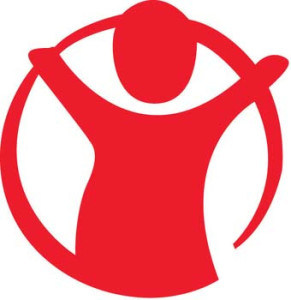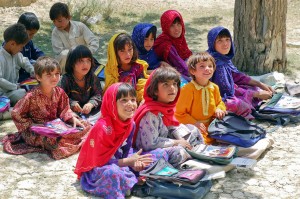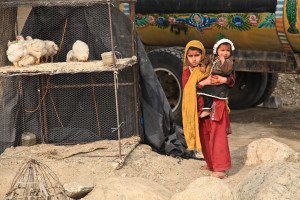 Founded in 1919 to provide hunger relief aid to children in regions recovering from World War I, the independent nonprofit Save the Children has developed into the foremost child welfare and rights organization in the world. Save the Children seeks to ensure survival, safety, growth, and participation for every child. The agency accomplishes this through a holistic approach that includes programs in a broad array of areas ranging from rights governance advocacy to emergency response efforts.
Founded in 1919 to provide hunger relief aid to children in regions recovering from World War I, the independent nonprofit Save the Children has developed into the foremost child welfare and rights organization in the world. Save the Children seeks to ensure survival, safety, growth, and participation for every child. The agency accomplishes this through a holistic approach that includes programs in a broad array of areas ranging from rights governance advocacy to emergency response efforts.
Made up of Save the Children International and 30 member organizations, Save the Children operates in more than 120 countries. Among them are those where children are most affected by poverty, conflict, and exploitation. Together with its partners, Save the Children positively impacted the lives of over 55 million children in 2014. In recent years, its activities have made a key contribution to a reduction in the number of global child deaths per annum from 12 million to 5.9 million.
Save the Children’s work in Afghanistan began in 1976, and it facilitates programs, either directly or through partners, in 15 of the country’s 34 provinces. Committed to engaging with Afghans from all strata of society, Save the Children collaborates with parents, teachers, and religious leaders, as well as village councils, national NGOs, and government agencies. Collectively, its programs in Afghanistan bring over 700,000 children lasting benefits in such areas as child protection and rights governance, health and nutrition, and education, among others.
Protecting Children and Raising Awareness of Child Rights
 Though the Afghanistan government has signed the UN Child Rights Convention (UNCRC), the country lacks a comprehensive national law covering abuses against children. Additionally, awareness of children’s rights principles remains extremely low among the general public. As a result of weakly-implemented, poorly-understood, and inconsistent standards and regulations on child treatment, advancements in the protection of children have been slow relative to progress in other sectors of Afghan society.
Though the Afghanistan government has signed the UN Child Rights Convention (UNCRC), the country lacks a comprehensive national law covering abuses against children. Additionally, awareness of children’s rights principles remains extremely low among the general public. As a result of weakly-implemented, poorly-understood, and inconsistent standards and regulations on child treatment, advancements in the protection of children have been slow relative to progress in other sectors of Afghan society.
Traditional systems of communal security have also suffered due to the combined effects of continuing conflict and lack of economic opportunity. All told, these factors leave Afghan children at increased risk of abuse and neglect, violence, cruel punishment, and exploitative practices.
To address this situation, Save the Children advocates for stronger institutionalization of child rights governance along with improvements in the capabilities and readiness of government and civil society actors to carry out measures needed to safeguard children from harm. Furthermore, Save the Children formed a national child rights advocacy forum that has partnered with UNICEF and the Ministry of Labor, Social Affairs and Disabled to establish a UNCRC consultation and reporting center in Kabul.
In collaboration with the Ministry of Hajj and Religious Affairs, Save the Children works to cultivate a public conception of child rights that is grounded in the values of Islam. It aims to help adults and children alike develop the skills to promote child rights issues in mosques, Madrasas, Shouras, and other communal bodies. Save the Children also provides support for the Child Protection Action Network, a national affiliation of government, NGO, and community leaders that organizes services for the protection of vulnerable children.
Through informative pamphlets and training guides distributed to religious leaders, village elders, and other influential stakeholders, Save the Children helps influence positive change in accepted behaviors and attitudes toward children. Besides directly teaching children and adults to recognize and respond to child rights transgressions, Save the Children produces awareness-raising media programs that are broadcast across entire provinces.
Confronting Health and Nutrition Challenges
Over the past decade, Afghanistan has realized a significant improvement in health services. Nonetheless, shortcomings such as an inadequate number of trained medical professionals, widespread malnutrition and stunted growth, and high infant mortality rates continue to negatively affect the lives of Afghan children.
 Given these circumstances, early childhood remains a precarious period for young Afghans. Save the Children prioritizes nutrition and newborn care to reduce preventable child deaths. For example, the organization maintains therapeutic feeding sites where it treats those with acute malnutrition. Save the Children also works to diminish the occurrence of malnourishment by running counseling and peer support programs that teach optimal infant and young child feeding practices to caregivers.
Given these circumstances, early childhood remains a precarious period for young Afghans. Save the Children prioritizes nutrition and newborn care to reduce preventable child deaths. For example, the organization maintains therapeutic feeding sites where it treats those with acute malnutrition. Save the Children also works to diminish the occurrence of malnourishment by running counseling and peer support programs that teach optimal infant and young child feeding practices to caregivers.
Additionally, Save the Children trains local childbirth assistants in isolated provinces as a means of increasing survival before, during, and following pregnancy. Save the Children schools have trained over 135 childbirth assistants in Jawzjan Province and 24 in Uruzgan.
Efforts of Save the Children to build Afghanistan’s medical services capacity target a diverse spectrum of health workers that encompasses both community volunteers and professional doctors and nurses. Save the Children delivers courses in the administration of vaccines and the judicious use of pharmaceuticals, as well as lessons on infant care and feeding and the identification and treatment of malnutrition. As a deterrent to the spread of communicable diseases, instruction is provided in hygienic practices and the prevention of pneumonia and diarrhea.
For the Ministry of Public Health’s Basic Package of Health Services, Save the Children has produced training materials and curricula that have increased capabilities in the domains of community mobilization and interpersonal communication and counseling. Mobile health teams comprising a doctor, childbirth assistant, and vaccinator have been deployed by Save the Children to provide access to health care for families in underserved, remote regions. Beyond building and managing health posts in rural districts, Save the Children also procures equipment and trains personnel at existing health centers.
Supporting Community-Based Education
With a number of material and cultural obstacles impeding greater access to schooling, Save the Children works with the Ministry of Education to increase educational opportunities for Afghan children. Its primary focus has been the establishment of 350 community-based education and accelerated learning classes. The accelerated learning program prepares older children who had abandoned formal education to enter secondary school by helping them to complete six years of elementary school instruction in half that time.
For children between 3 and 6 years old, Save the Children runs 547 community-based, early-childhood care and development centers across seven provinces. Parenting classes for adults address various issues pertinent to child welfare, including nutrition, language development, and exploitative labor. Altogether, Save the Children’s education programs have reached more than 100,000 children and adults.
